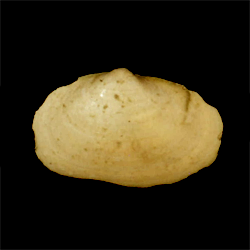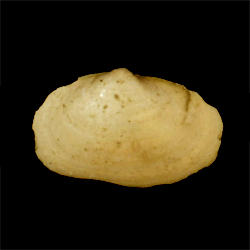
Sportellidae

- Phylum: Mollusca
- Class: Bivalvia
- Order: Imparidentia
- Family: Sportellidae
Overview
Common name: Sportellid clams
Key morphological features: The Sportellidae are small to medium in size, up to 20 mm. The shells are equivalve and thin-walled or solid, with an elongated, oval, or quadrangular shape. Some species gape at both the anterior and posterior end. The shell is composed of aragonite and exterior sculpture is smooth or irregularly commarginal, usually with granulation or pustules. Valve interiors are non-nacreous. The pallial line is unbroken, and the interior shell margins are smooth or denticulate. Species of Sportellidae are isomyarian (both adductor muscles equal in size) or slightly heteromyarian (anterior adductor is smaller). The heterodont hinge has one cardinal tooth in each valve, and sometimes a second can develop. Source: Mikkelsen, P.M., and Bieler, R. 2008. Seashells of Southern Florida: Bivalves. Princeton, New Jersey: Princeton University Press. 503 pp.
Geological range: Jurassic to Recent (Mikkelsen & Bieler, 2008).
Geographic distribution: A distributional map for modern Sportellidae may be accessed from OBIS. A distributional map for ancient Sportellidae may be accessed from the Paleobiology Database.
Diversity: There are 7 recognized living species of Sportellidae and 2 genera (WoRMS database, unvetted). The Paleobiology Database recognizes 7 fossil genera and 31 fossil species of Hiatellidae (unvetted).
Paleoecology: The Sportellidae are marine suspension feeders that often live commensally with larger invertebrates, such as polychaete worms. They are rare, and little is known about their ecology. Source: Mikkelsen and Bieler (2008).
Phylogenetic status: Unknown.
